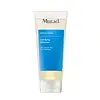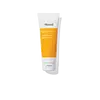What's inside
What's inside
 Key Ingredients
Key Ingredients

 Benefits
Benefits

 Concerns
Concerns

 Ingredients Side-by-side
Ingredients Side-by-side

Water
Skin ConditioningCocamidopropyl Betaine
CleansingSodium C14-16 Olefin Sulfonate
CleansingMethyl Gluceth-20
HumectantPPG-26-Buteth-26
Skin ConditioningPEG-40 Hydrogenated Castor Oil
EmulsifyingButylene Glycol
HumectantCimicifuga Racemosa Root Extract
AntimicrobialCamellia Oleifera Leaf Extract
AstringentSilver Citrate
AntimicrobialMenthol
MaskingPEG-150 Distearate
EmulsifyingZea Mays Starch
AbsorbentHydrolyzed Corn Starch
HumectantHydrolyzed Corn Starch Octenylsuccinate
AbsorbentGlyceryl Stearate
EmollientCocamidopropyl Dimethylamine
EmulsifyingPolysorbate 80
EmulsifyingCitric Acid
BufferingTetrasodium EDTA
Chlorphenesin
AntimicrobialMethylisothiazolinone
PreservativeLimonene
PerfumingAngelica Archangelica Leaf Oil
PerfumingCymbopogon Nardus Oil
MaskingCitrus Limon Peel Oil
MaskingCitrus Aurantifolia Oil
CleansingLavandula Hybrida Oil
EmollientCitrus Aurantium Dulcis Peel Oil
MaskingPrunus Armeniaca Kernel Oil
MaskingParfum
MaskingWater, Cocamidopropyl Betaine, Sodium C14-16 Olefin Sulfonate, Methyl Gluceth-20, PPG-26-Buteth-26, PEG-40 Hydrogenated Castor Oil, Butylene Glycol, Cimicifuga Racemosa Root Extract, Camellia Oleifera Leaf Extract, Silver Citrate, Menthol, PEG-150 Distearate, Zea Mays Starch, Hydrolyzed Corn Starch, Hydrolyzed Corn Starch Octenylsuccinate, Glyceryl Stearate, Cocamidopropyl Dimethylamine, Polysorbate 80, Citric Acid, Tetrasodium EDTA, Chlorphenesin, Methylisothiazolinone, Limonene, Angelica Archangelica Leaf Oil, Cymbopogon Nardus Oil, Citrus Limon Peel Oil, Citrus Aurantifolia Oil, Lavandula Hybrida Oil, Citrus Aurantium Dulcis Peel Oil, Prunus Armeniaca Kernel Oil, Parfum
Water
Skin ConditioningCocamidopropyl Betaine
CleansingDisodium Laureth Sulfosuccinate
CleansingGlycerin
HumectantPanthenol
Skin ConditioningAcrylates/C10-30 Alkyl Acrylate Crosspolymer
Emulsion StabilisingPropanediol
SolventPolysorbate 20
EmulsifyingTocopheryl Acetate
AntioxidantRice Amino Acids
Skin ConditioningAllantoin
Skin ConditioningAscorbic Acid
AntioxidantCellulose
AbsorbentSodium PCA
HumectantLactose
HumectantUrea
BufferingYeast Amino Acids
HumectantTrehalose
HumectantInositol
HumectantTaurine
BufferingBetaine
HumectantHydroxypropyl Methylcellulose
Emulsion StabilisingTetrasodium Glutamate Diacetate
Sodium Hydroxide
BufferingCitric Acid
BufferingLeuconostoc/Radish Root Ferment Filtrate
AntimicrobialCaprylyl Glycol
EmollientChlorphenesin
AntimicrobialPhenoxyethanol
PreservativeSodium Benzoate
MaskingLimonene
PerfumingParfum
MaskingCI 77492
Cosmetic ColorantWater, Cocamidopropyl Betaine, Disodium Laureth Sulfosuccinate, Glycerin, Panthenol, Acrylates/C10-30 Alkyl Acrylate Crosspolymer, Propanediol, Polysorbate 20, Tocopheryl Acetate, Rice Amino Acids, Allantoin, Ascorbic Acid, Cellulose, Sodium PCA, Lactose, Urea, Yeast Amino Acids, Trehalose, Inositol, Taurine, Betaine, Hydroxypropyl Methylcellulose, Tetrasodium Glutamate Diacetate, Sodium Hydroxide, Citric Acid, Leuconostoc/Radish Root Ferment Filtrate, Caprylyl Glycol, Chlorphenesin, Phenoxyethanol, Sodium Benzoate, Limonene, Parfum, CI 77492
 Reviews
Reviews

Ingredients Explained
These ingredients are found in both products.
Ingredients higher up in an ingredient list are typically present in a larger amount.
Chlorphenesin is a synthetic preservative. It helps protect a product against bacteria in order to extend shelf life. In most cases, Chlorphenesin is paired with other preservatives such as phenoxyethanol and caprylyl glycol.
Chlorphenesin is a biocide. This means it is able to help fight the microorganisms on our skin. It is also able to fight odor-releasing bacteria.
Chlorphenesin is soluble in both water and glycerin.
Studies show Chlorphenesin is easily absorbed by our skin. You should speak with a skincare professional if you have concerns about using Chlorphenesin.
Learn more about ChlorphenesinCitric Acid is an alpha hydroxy acid (AHA) naturally found in citrus fruits like oranges, lemons, and limes.
Like other AHAs, citric acid can exfoliate skin by breaking down the bonds that hold dead skin cells together. This helps reveal smoother and brighter skin underneath.
However, this exfoliating effect only happens at high concentrations (20%) which can be hard to find in cosmetic products.
Due to this, citric acid is usually included in small amounts as a pH adjuster. This helps keep products slightly more acidic and compatible with skin's natural pH.
In skincare formulas, citric acid can:
While it can provide some skin benefits, research shows lactic acid and glycolic acid are generally more effective and less irritating exfoliants.
Most citric acid used in skincare today is made by fermenting sugars (usually from molasses). This synthetic version is identical to the natural citrus form but easier to stabilize and use in formulations.
Read more about some other popular AHA's here:
Learn more about Citric AcidCocamidopropyl Betaine is a fatty acid created by mixing similar compounds in coconut oil and dimethylaminopropylamine, a compound with two amino groups.
This ingredient is a surfactant and cleanser. It helps gather the dirt, pollutants, and other impurities in your skin to be washed away. It also helps thicken a product and make the texture more creamy.
Being created from coconut oil means Cocamidopropyl Betaine is hydrating for the skin.
While Cocamidopropyl Betaine was believed to be an allergen, a study from 2012 disproved this. It found two compounds in unpure Cocamidopropyl Betaine to be the irritants: aminoamide and 3-dimethylaminopropylamine. High-grade and pure Cocamidopropyl Betaine did not induce allergic reactions during this study.
Learn more about Cocamidopropyl BetaineLimonene is a fragrance that adds scent and taste to a formulation.
It's found in the peel oil of citrus fruits and other plants such as lavender and eucalyptus. The scent of limonene is generally described as "sweet citrus".
Limonene acts as an antioxidant, meaning it helps neutralize free radicals.
When exposed to air, oxidized limonene may sensitize the skin. Because of this, limonene is often avoided by people with sensitive skin.
The term 'fragrance' is not regulated in many countries. In many cases, it is up to the brand to define this term. For instance, many brands choose to label themselves as "fragrance-free" because they are not using synthetic fragrances. However, their products may still contain ingredients such as essential oils that are considered a fragrance.
Learn more about LimoneneParfum is a catch-all term for an ingredient or more that is used to give a scent to products.
Also called "fragrance", this ingredient can be a blend of hundreds of chemicals or plant oils. This means every product with "fragrance" or "parfum" in the ingredients list is a different mixture.
For instance, Habanolide is a proprietary trade name for a specific aroma chemical. When used as a fragrance ingredient in cosmetics, most aroma chemicals fall under the broad labeling category of “FRAGRANCE” or “PARFUM” according to EU and US regulations.
The term 'parfum' or 'fragrance' is not regulated in many countries. In many cases, it is up to the brand to define this term.
For instance, many brands choose to label themselves as "fragrance-free" because they are not using synthetic fragrances. However, their products may still contain ingredients such as essential oils that are considered a fragrance by INCI standards.
One example is Calendula flower extract. Calendula is an essential oil that still imparts a scent or 'fragrance'.
Depending on the blend, the ingredients in the mixture can cause allergies and sensitivities on the skin. Some ingredients that are known EU allergens include linalool and citronellol.
Parfum can also be used to mask or cover an unpleasant scent.
The bottom line is: not all fragrances/parfum/ingredients are created equally. If you are worried about fragrances, we recommend taking a closer look at an ingredient. And of course, we always recommend speaking with a professional.
Learn more about ParfumWater. It's the most common cosmetic ingredient of all. You'll usually see it at the top of ingredient lists, meaning that it makes up the largest part of the product.
So why is it so popular? Water most often acts as a solvent - this means that it helps dissolve other ingredients into the formulation.
You'll also recognize water as that liquid we all need to stay alive. If you see this, drink a glass of water. Stay hydrated!
Learn more about Water